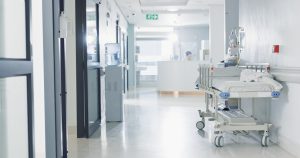The Role of ACLS Certification Online in Large-Scale Disaster Preparedness

Large disasters like hurricanes, wildfires, or mass casualty incidents often leave people waiting longer than expected for professional help. In those moments, survival depends on who is standing nearby, not just on ambulances or hospitals. That is why ACLS certification online is gaining importance in emergency planning. It allows more people to learn life-saving skills without needing to attend a physical class.
Epidemiological studies show that after formal ACLS certification, the rate of survival to hospital discharge after in-hospital cardiac arrest improved from 23.1% to 69.1%. If more responders are trained and ready, more lives can be saved before medical teams arrive.
This blog explores how advanced medical training plays a practical role in large-scale emergencies.
Understanding Advanced Cardiovascular Life Support (ACLS) Certification Online
Advanced Cardiovascular Life Support is specialized medical training that prepares healthcare providers to respond effectively when a person experiences cardiac arrest or other life-threatening emergencies.
The online version makes it much easier for people to learn. You do not need to travel anywhere or take time off work. You’ll complete interactive modules, virtual simulations, and a final skills assessment to demonstrate your competency.. It is practical, flexible, and far less stressful than sitting in a classroom for hours.
Why Disaster Preparedness Needs Advanced Medical Readiness
Disasters do not follow schedules, and help does not always arrive on time. That is why medical readiness should not be seen as the responsibility of hospitals alone. It should be part of community planning. Here’s why medical readiness must exist beyond hospitals and into everyday hands:
Professional Help Often Gets Delayed
In large-scale emergencies, ambulances may face blocked roads, damaged routes, or overloaded systems. Every minute saved increases the chance of survival.
Trained Responders Act Without Hesitation
Someone with advanced emergency training does not panic. They check vital signs, stabilize the person, and keep them alive until medical teams arrive.
Readiness Is More Than Just Equipment
Disaster plans often focus on supplies, shelters, and evacuation routes. But without skilled people on the ground, these plans fall short. True preparedness includes human ability, not just tools.
Key Benefits of ACLS Certification in Large-Scale Emergencies
The biggest advantage of advanced training is confidence. When something serious happens, most people look around, hoping someone else will take charge. A person who has gone through ACLS certification online does not wait. They step forward because they already know what to do.
Clear Thinking in Panic Situations
In a crisis, people often panic or freeze. Someone with proper training does not waste time guessing. They check breathing, find a pulse, and start the right action instead of trying random methods.
More Trained People in More Places
Since the training is online, it is not limited to hospitals or big cities. A security guard in a mall, a school staff member, or even a community volunteer can complete it from home. This spreads emergency skills across different locations instead of keeping them within medical centers.
Better Support for Rescue Teams
In large-scale emergencies, EMS and hospital teams reach capacity quickly. If trained responders are already at the scene, they can handle the first few minutes and reduce the pressure on ambulance staff when they arrive.
Integrating Certified Responders Into Disaster Plans
Training people is most effective when certified individuals are formally integrated into organizational or community response plans. Many organizations now keep a list of staff or volunteers who are certified and can respond during emergencies. This includes nurses, security workers, first responders, and even laypersons who have completed ACLS certification online.
When a crisis happens, these trained individuals can be assigned to shelters, first aid stations, or entry points where people need help. Instead of waiting for instructions, they already know how to coordinate with ambulance teams and guide untrained people around them. It creates an organized response instead of random crowd efforts.
Some cities even use community alert systems to notify trained responders who are nearby. This kind of early action can double survival chances before the patient even reaches a hospital.
Strengthening Emergency Readiness with Digital Learning
Emergencies do not always wait for doctors to arrive. In many cases, it is someone nearby who becomes the first responder. That is why ACLS certification online matters. It gives people the confidence to act when every second counts.
Begin by enrolling in an accredited ACLS course from a trusted provider such as CPR Care. Even one structured course can enhance your readiness to respond effectively.



